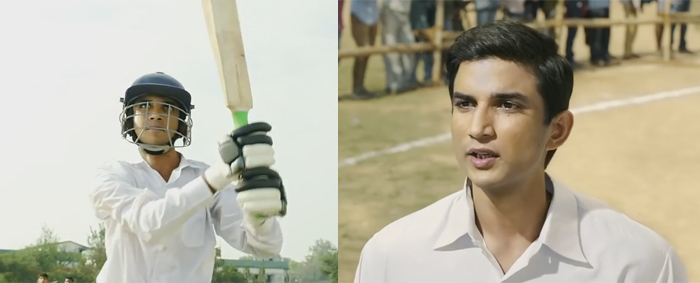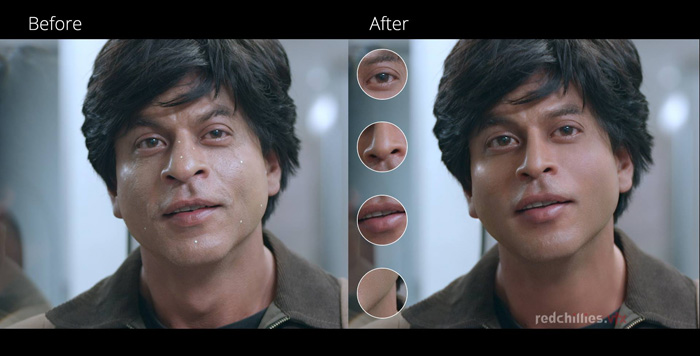Visual Effects (VFX) have become indispensable to the production cycle of feature films over the past several years and the Bollywood space is witnessing certain projects that are pushing VFX to the forefront of moviemaking. In 2016, VFX redefined storytelling on the big screen with the release of Fan, M.S. Dhoni: The Untold Story, Sultan, Shivaay and Mohenjo Daro. Domestic filmmakers have also begun using VFX increasingly, looking to unearth IPs of bigger scales.

Indian studios have started adopting a harmonic blend of skills and expertise from developed VFX markets present in other countries. Increasing investments in VFX centric science fiction action films would also see the genre gaining traction in the country.
The VFX industry in India has recorded an unprecedented growth over the years, majorly led by more and more Hollywood studios tapping into the massive pool of VFX professionals in India to work on their projects. The VFX and post-production industry grew around 20 per cent in 2016, propelled by a 31 per cent growth in the VFX industry.
However, VFX revenue from international projects continued to be the major contributor, accounting for more than 73 per cent of the industry revenue. While VFX revenue from international projects would continue to form the major portion of the revenue pie, revenues from domestic projects is expected to grow at a much faster pace on account of increasing budgets being apportioned for VFX in domestic films.
The VFX revenue from domestic projects is projected to grow at a CAGR of more than 31 per cent during 2016 to 2021. The demand would not only come from Hindi, but also from regional movies — with producers in these industries pouring in more investments in VFX.
The Indian VFX industry took a tremendous leap in terms of growth in the last few years. Shivaay, which crossed the Rs 848 million mark, had 4,500 VFX shots. About 70 to 75 per cent of the film was shot against the green/blue screens and around 100 artists worked on the project for a period of about 11 months. In Fan, the lead actor was de-aged and shrunk in size frame by frame for the complete duration of about 120 minutes. Sultan registered more than Rs 3,000 million on the domestic box office collection and featured more than 2,200 VFX shots. M.S. Dhoni: The Untold Story, a biopic based on Indian cricketer MS Dhoni’s life, showcased real-world events and employed VFX to reconstruct several periods of latter’s life.

Baahubali has brought VFX to the vanguard in the regional language films. South Indian cinema is also competing neck-to-neck with Bollywood in terms of VFX use in films; a recent example is Kaashmora, which released in 2016. The VFX team of the film worked on more than 70 minutes of footage, with most of the work comprising set extension. The film also used 3D face scan technology, shooting fight scenes with stunt doubles and merging the actor’s face onto their bodies. Released in 2017, Gautamiputra Satakarni had more than 40 minutes of VFX work on screen, majority of which were powerful action sequences. The producers of the film spent close to Rs 100 million, of the total Rs 550 million movie budget and about 25 studios were hired to do the VFX work. Baahubali 2, scheduled to release in 2017, has appointed about 30 VFX studios from around the world. Further, an upcoming film based on freedom fighter Uyyalawada Narasimha Reddy is likely to get the VFX team of Baahubali on board.
Some trends that will dominate the VFX industry are:
Use of VFX in advertising:
Among the many factors driving the ads on TV and in the digital space is the eruption of VFX as a means to create ads. The use of high-end VFX is no longer limited to big-budget films, as advertising agencies have been using it remarkably to create innovative advertisements.
From labour-intensive jobs to executing high-quality projects:
Of the 400 odd animation and VFX studios in the country, most of the studios used to purely do labour-intensive jobs, such as match moving, rotoscoping, wire removal and keying. However, this has slowly started to change as studios in India have begun engaging local talent in exhaustive training programmes. Studios are incorporating VFX practices that are on a par with their counterparts in other countries and executing high-quality projects end-to-end.
Use of cloud in VFX:
The VFX studios in India have started to embrace cloud. For instance, in 2016, Prana Studios selected IBM cloud to run new high resolution rendering jobs that are essential to generate high-quality visual effects.
Augmented Reality (AR) and virtual Reality (VR) technologies are attempting to bring about a fundamental shift in the way people interact with their surroundings. India has gradually started to embrace these technologies. India’s prowess in the software development space, launch of 4G services by Reliance Jio and other telecom operators, and major boost from the government to ‘Digital India’ initiative- are likely to drive the growth.
The AR and VR are likely to penetrate the animation and VFX space and studios are likely to see more projects based on these technologies flowing in. In 2016, the production team of the film, Baahubali 2, launched a 360-degree virtual reality video showcasing the gigantic sets of the film.
The AR and VR would also make its presence felt in the live events domain. Maya Digital, a leading animation studio, will be converting the ‘Gobindgarh Fort’ in Punjab into ‘Mayanagri’, a virtual reality theme park.
The tech-savvy makeover, would comprise of a 3D live show, projection mapping and other entertainment shows. Video games are expected to be one of the biggest drivers of AR and VR adoption in India. Flence, PC and mobile gamers present a significant upside to the gaming potential. While the first phase of growth is likely to come from console gaming, mobile gaming is expected drive the revenues in the long run.
The increase in the adoption of VR headsets in the coming years will impel the demand of animation and VFX services. India has, now, more than 70 start-ups in this space, which are investing in techniques to create innovative content. Bigsharks Studio, a visual effects and stereo conversion outfit established in 2015, uses the X3D pipeline. The pipeline enables VFX artists to create some of the leading VR and cinema-ready 2D and 3D stereo products, while at the same time decreasing human errors.
Even though the prospects for AR and VR growth in India are substantial, there are some crucial challenges. The existing hardware costs in India prohibits mass adoption. Cheaper card-based alternatives, such as Google Cardboard VR, lack the true immersive experience. Additionally, majority of the current smartphone base in India, which is about 200 million units, is not designed to support the VR content.
The continuing growth of the Indian VFX industry would greatly depend on how VFX studios, particularly smaller ones, are able to acquire some market power over their clients, so as to increase their bottom lines. Another issue is with the psyche of young artists, who consider VFX work as a fixed nine-to-five profession. Some VFX studios are also faced with inadequate director participation in the VFX process. Lack of subsidies from the both central and the state governments has also plagued VFX vendors in India. This could lead to a number of studios considering a move to other countries that offer subsidies — a cost-effective proposition.
The government would need to recognise the VFX space as a major driver of the economy and figure out ways that can allow the formation of a landscape wherein collateral-free loans/financing are made easier at the entry gate.
With VFX making inroads into all the outlets of visual media, studios in India would continue to grow. On account of the increasing competition in the domestic VFX market, prominent studios would continue to scout for more foreign work by establishing offices abroad

